Variable length single-stranded DNA springs determine how far a hinge of double-stranded DNA joining two stiff sections of DNA origami can bend.
A tunable hinge joint for DNA nanotechnology
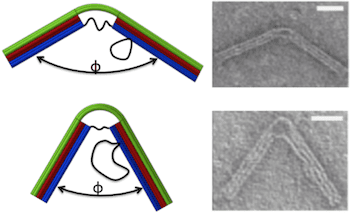

Variable length single-stranded DNA springs determine how far a hinge of double-stranded DNA joining two stiff sections of DNA origami can bend.
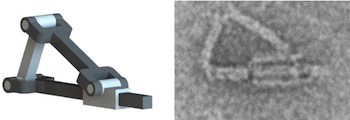
Scaffolded DNA origami is combined with hinges of single- or double-stranded DNA to built simple machines parts that have been combined to program simple to complex motions.
One example is presented of how well the meme is spreading that nanotechnology will evolve toward atomically precise manufacturing that will in turn bring forth a world of abundance.
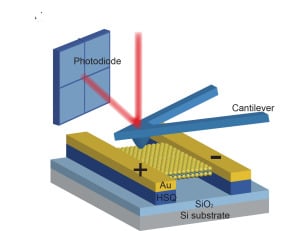
To measure in-plane piezoelectric stress, an MoS2 film was suspended on HSQ posts and clamped by two Au electrodes. When the film was indented with a scanning AFM probe, the induced stress changed the load on the cantilever, which was observed by the deflection of a laser beam. Credit: Berkeley Lab
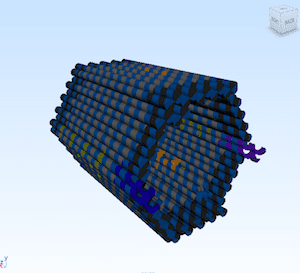
Combinations of different types of DNA nanorobots, implementing different logic gates, work together to tag a specific type of cell in a living cockroach depending on the presence or absence of two protein signals.
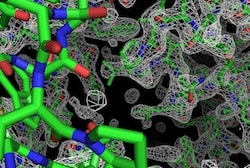
New software makes it possible to generate 3D structures of proteins without artificially incorporating metal atoms in the proteins, making it possible to study many molecular machines using data that could not previously be analyzed.